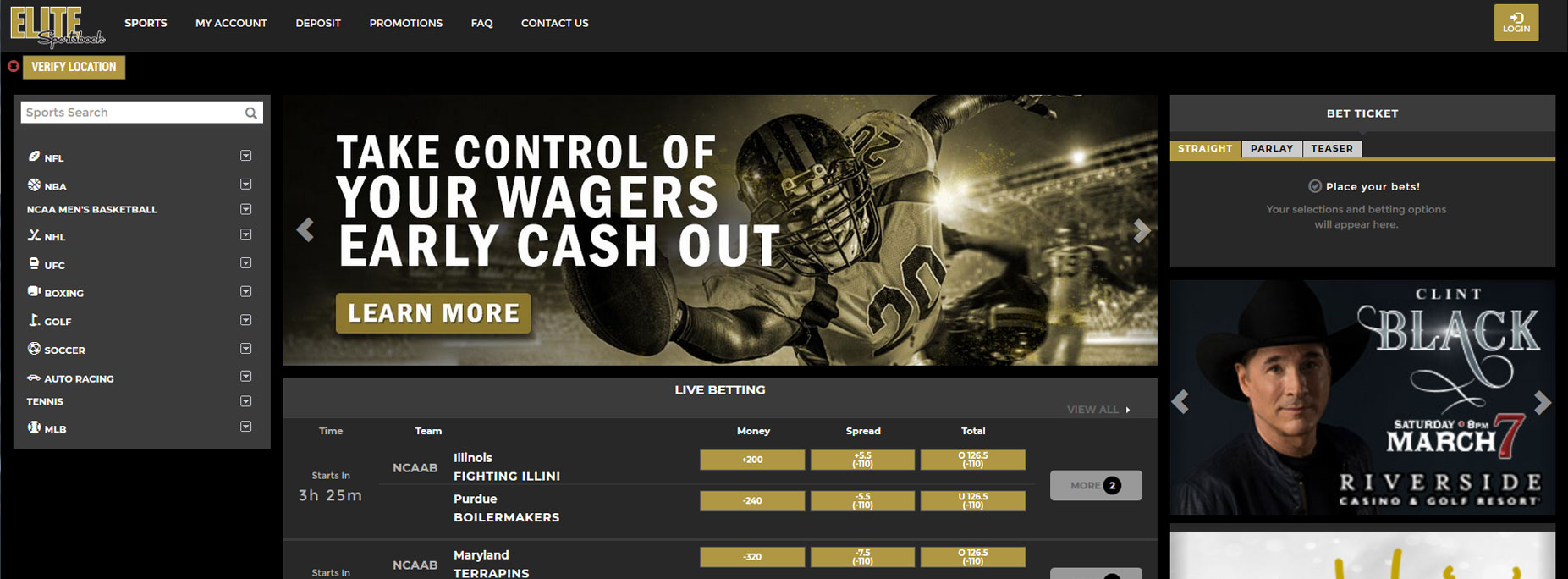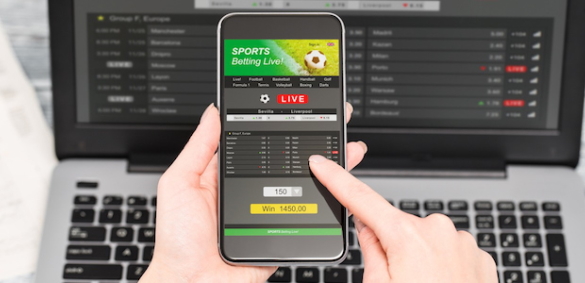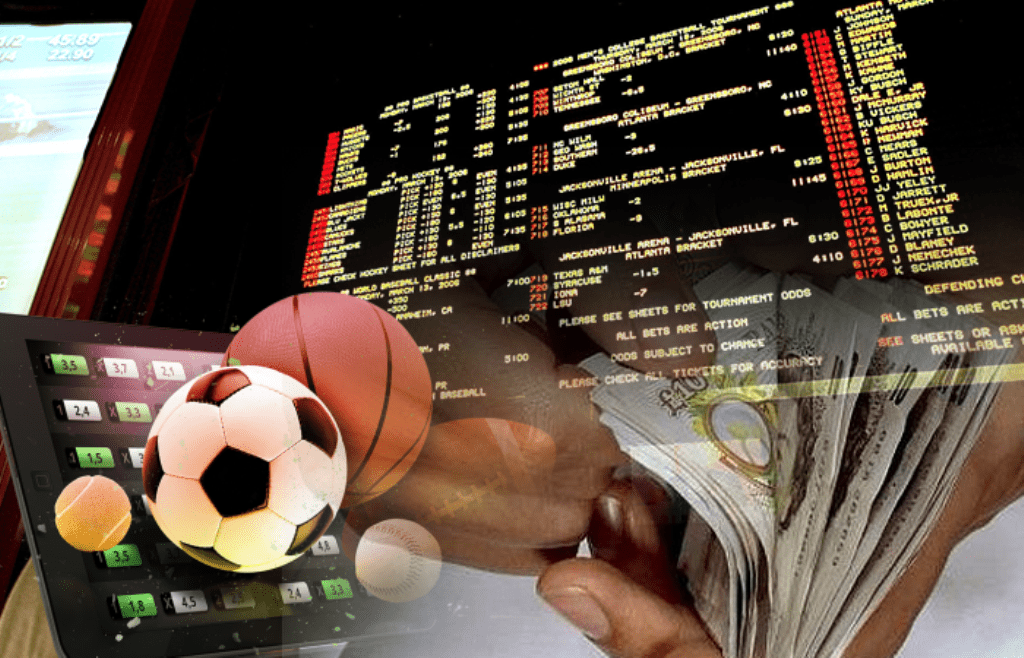Online Sports Betting For Dummies
For the casual sports fan, the concept of becoming a sports bettor can be a bit overwhelming. This article will cover tips and insights on sports betting for beginners and help the most casual sports fan get up to speed on how to bet on sports, including popular terms and concepts.

How to Bet Sports Online. This section gives a brief overview of how to bet sports online at the aforementioned sportsbooks – a quick step by step beginners guide to betting online: GT Bets: The homepage of the sportsbook lists the most popular sports in the center and then on the left is a sidebar listing the sports by category. Now you need a reputable online sportsbook (online sports betting site) to do business. There are millions of sites out there, but only a handful that will treat you right. I deal with a few main sites in my personal online sports betting, Bovada, BetOnline, and MyBookie. Check these sites out and see which one fits you best. Cash-Out Sports Betting for Dummies Many sportsbooks offer their customers the chance to ‘cash-out’ before the event has finished and their sports wager has been settled. The cash-out feature is a way for a bettor to lock-in profit from their sports wager, or minimize their losses. The online betting market handles billions of dollars on a monthly basis. Although this is all exciting and we want in, it can be easy to get lost with all the terms getting thrown around. Read ahead for our crash course in understanding sports betting and how to get started. Our Fascination With Sports Betting. Over the past few months, we’ve posted quite a few articles on sports betting. We posted three guides to cover the basics on handicapping baseball, basketball and football, but these didn’t nearly cover everything a beginner would need to know. We’ve also posted articles that cover basic terms, as well as other assorted betting tips.

Sports Betting for Beginners
What is a Point Spread?
Point spread (or betting on “the spread”) betting is one of the most popular formats of betting in the United States and provides an expected margin of victory for each matchup. A point spread allows individuals to bet on who will “cover” the point spread versus simply winning or losing a matchup. Take a given matchup where the home team, The New York Giants, is expected to win by 3-points, a point spread will be set up for that game where the sports bettor can either bet on the New York Giants minus 3 or their opponent plus 3. If you were to bet on the Giants minus 3 and they were to win by more than 3-points, you would win your bet, if they won by exactly 3-points you would get a refund (or a “push”) on your bet and if they won by less than 3-points or lost the game you would lose your bet. This form of betting does not care who wins or loses the game and is instead centered on how many points separate the two teams playing when the game ends. Below is an example of how points spreads may appear for a given MLB game using the Sportsgrid MLB Odds tool.
Moneyline Betting
Moneyline betting allows sports bettors to place a simple bet on who will win or lose a game, with different odds being offered for each team. A moneyline bet will typically be offered either as a + or – bet in the American Odds format and determines how much a bettor will receive if they place their bet. A simple way to think about moneyline betting is in $100 increments – if a moneyline is -120 then for every $120 wagered a sports bettor could expect to win $100 on a winning bet. If a moneyline is +120 then for everyone $100 wagered a sports bettor could expect to win $120 on a winning bet. The odds offered by sportsbooks will often include at least an extra 10% in the money line numbers (i.e there will never be a game with +100 and -100 as the odds) as the “vig” or commission which is the percentage that pays the sportsbook.
Whether a sports bettor is betting against the spread or moneyline betting, each game will have a favorite and underdog. The favorite will typically carry a “minus” price both on the moneyline and against the spread. The underdog will usually carry a “plus” price for the moneyline and a plus amount of points on the spread. For example, the previously mentioned example the NY Giants were -3 favorites. A -3 favorite would typically carry a win a moneyline close to -155. Their opponent would offer +3 points and a plus price on the moneyline. Below is an example of how moneyline betting may appear for a given MLB game using the Sportsgrid MLB Odds tool.
Totals (Over and Under) Betting
Betting operators also provide totals for each game which allow a sports bettor to bet “over” (that a team will score more points than the total) or “under” (that a team will score fewer points than the total) a total. These totals are generally offered for total points scored in a game as well as individual team totals for each team playing in a given contest. Betting operators also offer betting markets for totals centered around individual quarters, periods, halves or sets of innings. Below is an example of how totals (over and under) betting may appear for a given MLB game using the Sportsgrid MLB Odds tool.
What is Sports Betting Vig or Juice

The sports betting “vig” (short for vigorish), “juice”, is a commonly used term by sports bettors to reflect what the sports betting operator’s take, handle, or hold on a given game is. On a typical point spread for an NFL game, the vig is often -110 on both sides, meaning that a sports bettor will need to wager $110 to win $100. In this example, the -110 example is referred to as the vig. In an example where a sports betting operator has equal action on either side of a spread, this means that they will hold. Take the NY Giants example again: Player A bets $110 to win $100 on the NY Giants opponent to cover the spread, and Player B (you) bet $110 on the NY Giants to cover the spread of -3. In this example, we will wager $220 with a $210 payout going to you, the winning bettor. In this case, the sportsbook will receive $10 in profit on the $220 total wagered, or 4.5 percent.
Compare this to a game that may be offered at +180 / -200 as a betting market. Player A may wager $200 to win $100, and Player B would wager just $100 to win $180. In this example, a sportsbook would expect on average to pay out $290 for every $300 wagered (50 percent of the time a $300 payment to Player A and 50 percent of the time a $280 to Player B). While optically, this looks like the vig is still 20 percent, the actual hold for the sportsbook in this scenario decreases to 3.3 percent. Understanding not just the vig or juice, but the sportsbook’s hold percent, on a given bet or market is an important factor to being a successful sports bettor because we are competing directly against the house, and thus a reduction in their expected hold means good things for a bettor.
Where to Bet
Sports betting is going through a legalization process in the United States making the question of where to bet a complicated one. You can reference our US Sports Betting Tracker here to check the updated status in your states. Additionally, if you are looking to sign up at a new sportsbook many are offering deposit bonuses and promo codes to new users. We currently have promo code offerings for several of the leading sports betting websites including Fanduel, DraftKings Sportsbook, William Hill US and PointsBet.
How Much to Bet
There are lots of different complicated ideas on how to bet the optimal amounts, but the most basic principle is that you should never bet more than you are comfortable losing. To help with that, a sports bettor should establish what their sports betting bankroll is, or the amount that they are comfortable losing. From there, a sports bettor can establish what their unit size, or the average bet amount, is. A typical unit size for a standard bet against the spread might be one percent of your overall bankroll. If you determine that your overall betting bankroll is going to be $1,000 than a full unit bet should be $10. While these numbers may seem small to somebody hoping to get a quick win, the reality is that in a high variance game like sports betting it is important to manage your risk. To maximize profits, sports bettors can employ strategies such as Kelly Criterion, which recommend wagering more on games where you have a higher expected chance to win (for example a moneyline bet on a -400 favorite) and less on games which have a lower chance to win (for example a +3200 SuperBowl future), even if both games expect to offer a 10 percent edge.
Line Moves
Sportsbooks open their lines at different times for different contests (and using a variety of different methods) but eventually what happens is that an “opening line” will get set at your sportsbook. This line may change for a variety of different factors before the game actually starts, and things that can cause line moves including weather, starting lineups, key injuries, sharp or professional bettors action, or often other sportsbooks moving their lines. By the time the game starts, the line is frozen in what is referred to as the “closing line” for a game. Closing lines are generally the most accurate type – for they have all available information not just of that game but of the entire betting industry – and tracking the performance of your bet against the closing line is a sports betting standard.
Shop for the Best Line
Sports bettors should always shop around for the best line. While there may be reasons you would pay $60 for a $50 pair of shoes, in the days of the internet those reasons become fewer and further between. In the 1990s, maybe the pure convenience of being inside of a sportsbook was a reason to avoid shopping for the best line just to save a few percentage points of value, but that barrier is being slowly eliminated. With online betting now legal in many states, and lots of sites offering competing and different lines, sports bettors should always shop around for the best line. Sportsgrid offers an odds comparison tool for MLB, NFL, the NBA and more. These odds tools for each sport that lets you easily compare the best line for some of the most popular types of bets. While the difference between betting the NY Giants -3 (-110) and NY Giants (-2.5 EVEN) may seem small, over the course of hundreds of bets it could be the difference between being a winning or losing sports bettors. Always shop for the best line before making a wager.
What is Expected Value (EV)
Expected value (or EV as most bettors refer to it) is the expected return taking into account all known factors. Understanding the expected value is relevant in all aspects of life. If you go on a 6-week diet, you may expect to lose weight, if you invest in an S&P 500 Index Fund you may expect to return 6-10 percent over a 12-month period of time, and if you invest in a Masters Degree you may expect to return a higher paying job. In sports betting, bettors are constantly looking to generate positive expected value – or identify +EV betting opportunities. These are opportunities where we have an edge over the betting market. Take the infamous coin flip example, where we know that the true odds of a coin landing on heads or tails is 50 percent each. If I was to offer you a -110 price, you would never want to make that bet knowing that 50 percent of the time you would lose $110 and 50 percent of the time you would win $100. In this example, you would be expected to lose $10 for every $200 wagered making your expected value (EV) negative 5 percent.

Online Sports Betting For Dummies 2019
However, what if instead you were able to find a college football matchup between two evenly matched teams, that you considered close to a coin toss in their talent level. The betting market is aware of this, however, and also understands that there is a home field advantage so they have priced the home team as a -140 favorite with the road team a +120 underdog. Three days before the game, a hurricane pops up that requires the game to be relocated to a neutral field, thus removing the home team’s home field advantage.
Sports Betting For Beginners
Now you, the savvy sports bettor, are able to bet on a team with 50 percent odds to win at a +120 price. Sure, the actual result of that bet will be binary – you will either win or lose – but you’ll have put yourself into a +EV situation. 50 percent of the time you will win $120 and 50 percent of the time you will lose $100, resulting in a net $20 gain for every $200 wagered and a +10% expected return. Over the course of hundreds of bets, putting yourself into positive expected value situations is all that matters.